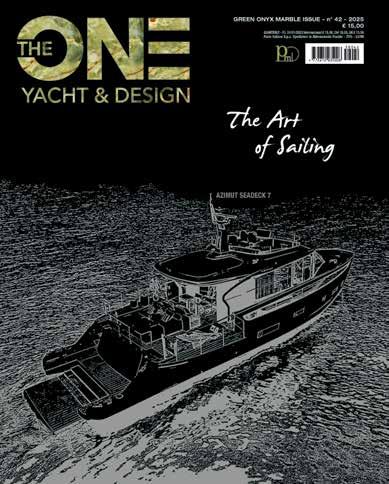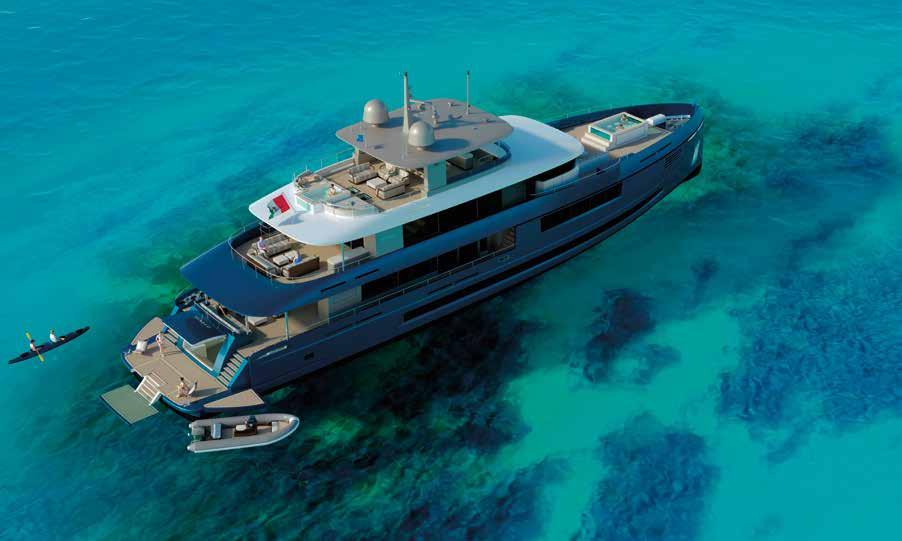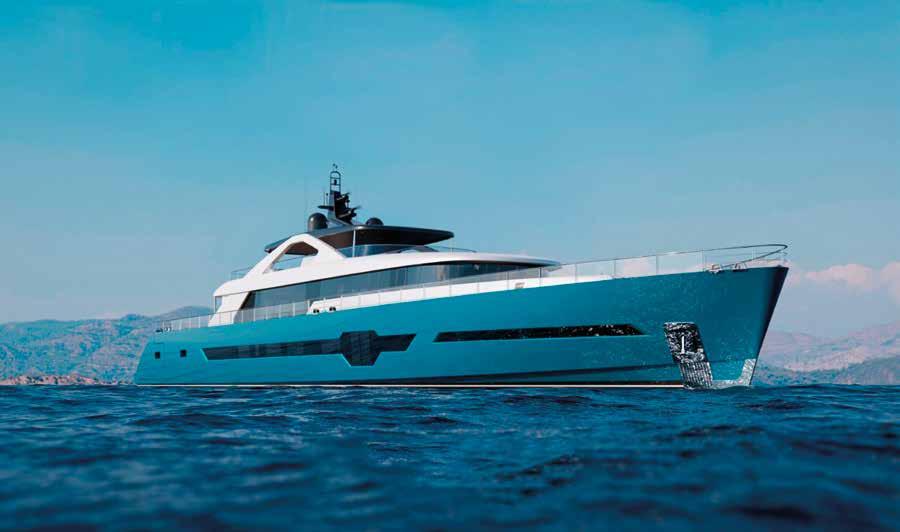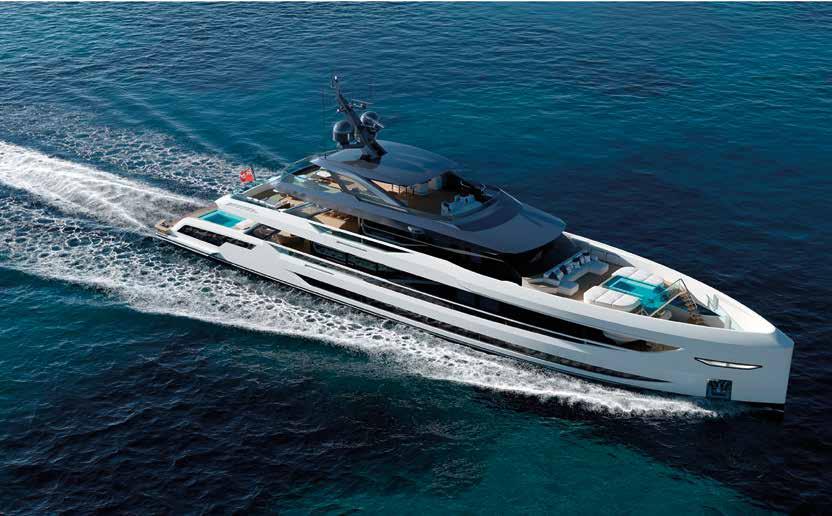SIMPLICITY IS NEVER EASY
by Mark Worden
ph. courtesy by Ginton Naval Architects
As a naval architect and designer, Jaron Ginton says his priority is the delivery date of the drawings and renderings, rather than the actual yacht, but he does admit that “the completion of a yacht is a rewarding moment: no computer or scale model can provide the feeling that you get when you see the final product.” He tells us about some of his 117 projects
“In order to make a boat simple, you have to make a big effort. This doesn’t happen by itself. So when the end product is simple, everybody says, ‘Oh, that’s beautiful, it’s so simple, no problem, it’s easy peasy”, but that isn’t the case: you have to fight very hard to keep things simple.”
The world may be in turmoil, with every day seeming to produce a new and more disturbing development, but this volatile situation doesn’t seem to have affected business for the Netherlands-based studio Ginton Naval Architects. The studio’s owner, Jaron Ginton, who was a captain, first in the Israeli Navy, and then on charter yachts, before training as a naval architect at the Higher Institute of Technology in Haarlem, tells The One that “Over the years I’ve realised that logical thinking is useless. You can think or conclude whatever you want, but reality goes its own way. We are definitely not suffering from a lack of work.” Since setting up the studio in 2002 (from 1992 until then he was in a partnership, Ginton & Weber) he has worked
on a total of 117 boats, although he makes a distinction between, on the one hand, naval architecture, and, on the other, exterior design and layout, the former being more frequent, as the studio’s name would suggest.
In terms of exterior design and layout, Ginton’s most prominent project at the moment is Stella Azure, 45-metre that will sail under the Marshall Islands flag, which is “one of the biggest flag producers in the world, and one of the best in terms of the reliability of its certification. It’s probably second only to the Cayman Islands.” This superyacht is close to completion at the Falcon yard in Pisa, and should be ready this year, if not this season. This is Ginton’s first project with Falcon which, he says, “is like a phoenix that has risen from the ashes under a new investor,” after having been dormant for a long time. This is in fact the yard’s first project in many years.” The interior design was by the Milan-based Hot Lab studio, “and this is our third project with them. It’s been a smooth ride. We certainly like working with them and I’m pretty sure they like working with us.”
The other projects that Ginton currently has on the go mainly concern naval architecture. Several of them are in Turkey, which has replaced Russia as a supplier of work: “There was a time when 80 per cent of our turnover came
In terms of exterior design and layout, Ginton’s most prominent project at the moment is Stella Azure, 45-metre. The yacht is close to completion at the Falcon yard in Pisa (Italy), and should be ready this year. Opposite page, top, the 63-metre currently under construction at the Nebula shipyard in Antalya (Turkey). The exterior design is by Adeo. Below, the 40 metre being built at the Dutch shipyard van der Valk: the exterior design is by SFG/C. Gatto
from Russia, but we don’t have any Russian clients at the moment.” Turkish projects include a 63-metre currently under construction at the Nebula shipyard in Antalya, while the design bureau is Adeo in Istanbul. Ginton says: “2017 and 2018 saw the delivery of two 50-metre sister sailboats which we designed and built in Bodrum. But later the owner said, ‘50 metres isn’t big enough for me: let’s build a motor boat’. Ginton adds that “the boat doesn’t have many tiers of superstructure and is very wide. Of course, from the point of view of safety and stability, that’s nice and convenient, but not many people know that stability and comfort are often contradictory.” He explains: “Normally, you want the centre of gravity to be as low as possible, but for this boat, that was too much. So we said ‘OK, let’s move the centre
of gravity slightly up. And we did so by using a heavy steel superstructure rather than aluminum.”
The studio is also working on the naval architecture for three-50 metre sister ships in Bodrum. Closer to home, there are three projects in the Netherlands: a 35 metre, a 35.5 metre and a 40 metre. Ginton says that not too much can be revealed about them, although he does point out that the Netherlands offers an extra challenge: “When boats leave the shipyard, they have to go through a lock and so we don’t have carte blanche to make the boat as wide as we would like.” Speaking both as a naval architect and a designer, Ginton says “My main concern is the delivery date of the drawings and the renderings, rather than the actual boat, but he does admit that “the completion of a boat is a rewarding moment: no computer and no scale model can give you the feeling you get when you see this big thing standing.”
The studio is also working on the naval architecture for three 50-metre sister ships in Bodrum, Turkey (above Project Ada) and, closer to home, there are three projects in the Netherlands at the van der Valk shipyard: one of them is the 35 metre (below) with the exterior by N.Top/G. de Groot

















